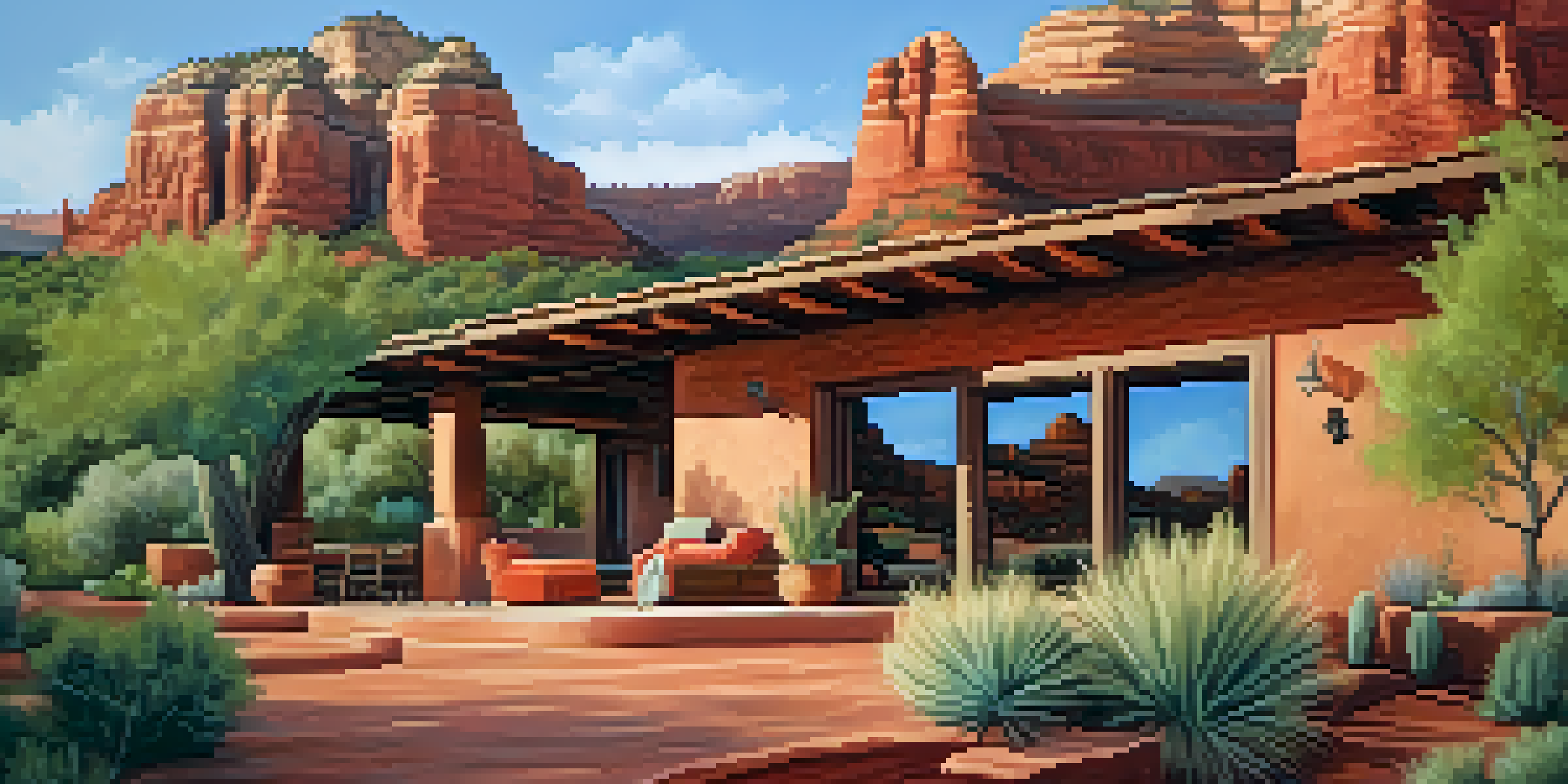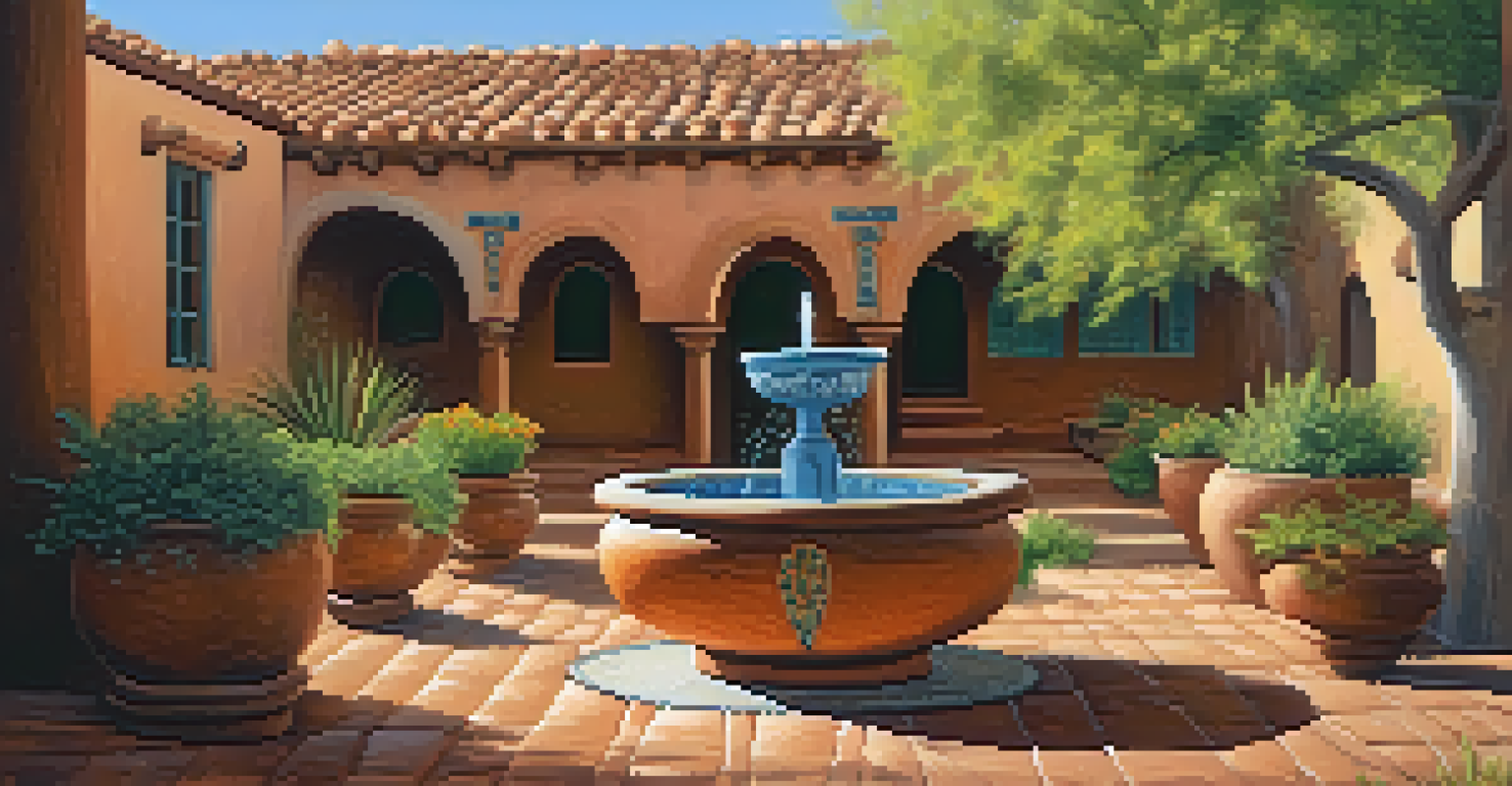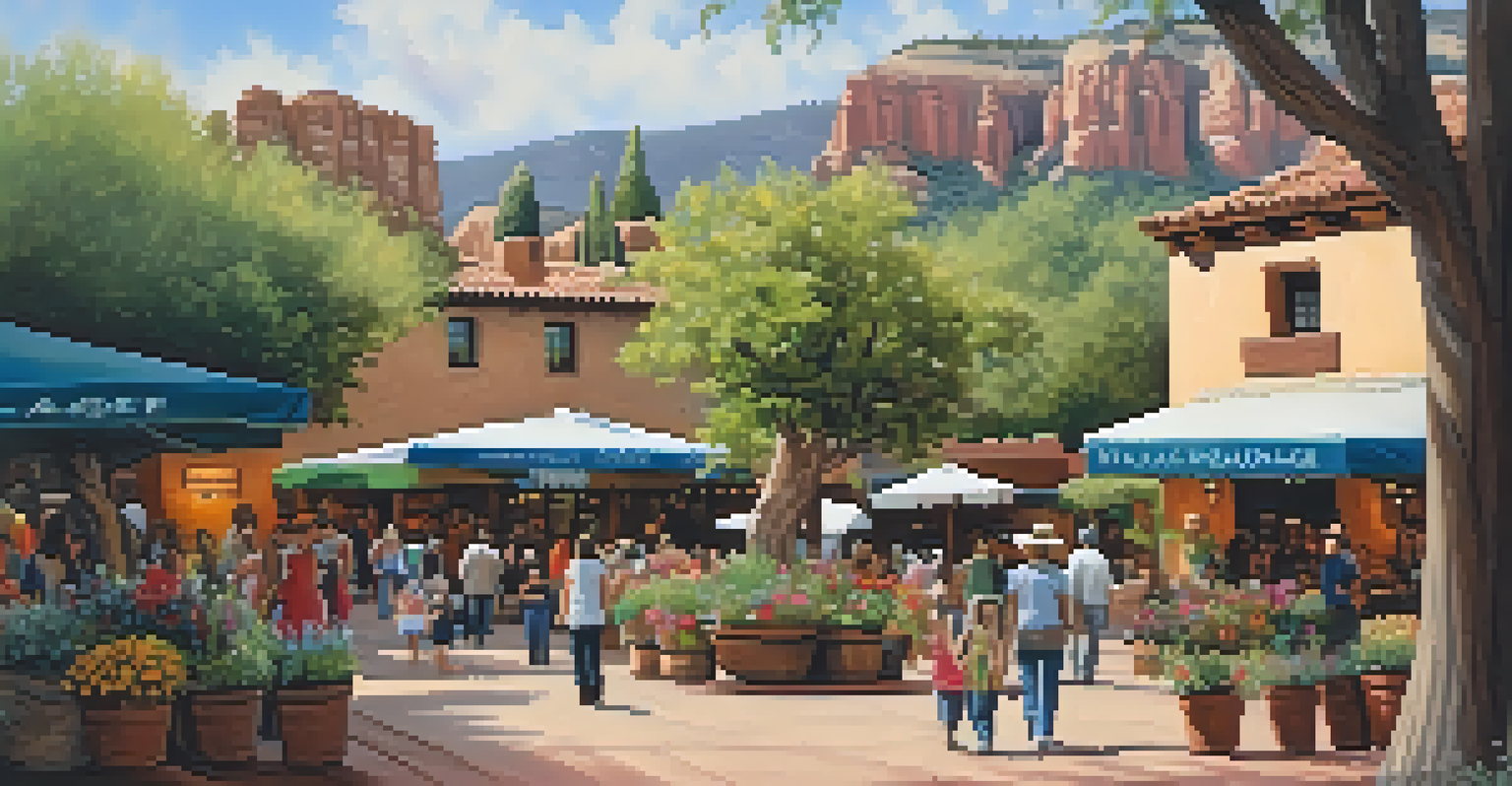Exploring Sedona's Adobe Architecture: History and Features

Understanding Adobe Architecture and Its Origins
Adobe architecture dates back thousands of years, rooted in the ancient building techniques of indigenous peoples. In Sedona, this style flourished due to the region's abundant natural clay and earth materials. The word 'adobe' itself comes from the Arabic term 'al-tob,' meaning 'the brick'—a nod to its historical significance across cultures.
Adobe architecture is not just about building; it's about creating a harmonious relationship with the environment.
This construction method utilizes sun-dried bricks made from clay, sand, and straw, creating structures that are both durable and energy-efficient. With Sedona's warm climate, adobe buildings naturally regulate temperature, keeping interiors cool in summer and warm in winter. These practical benefits contribute to the enduring appeal of adobe architecture in the region.
As settlers arrived in the American Southwest, they adapted existing adobe techniques, blending them with local styles and materials. This cultural exchange has led to the unique adobe structures we see today in Sedona, reflecting a rich tapestry of history and innovation.
Key Features of Sedona's Adobe Homes
One of the most distinctive features of adobe homes is their thick walls, which can be over 12 inches deep. This thickness not only provides structural stability but also enhances insulation, a crucial factor in Sedona's varying temperatures. The walls, often finished with smooth plaster, can be painted in earthy tones that harmonize with the natural landscape.

Another striking aspect is the rounded corners and arches that adorn many adobe buildings. These elements not only add aesthetic appeal but also improve airflow and light distribution within the home. The design often incorporates large windows that frame breathtaking views of Sedona's red rock formations, creating a seamless connection between indoor and outdoor spaces.
Roots of Adobe Architecture
Adobe architecture, with origins in ancient indigenous building techniques, thrives in Sedona due to its natural materials and climate.
Additionally, many adobe homes feature outdoor patios and courtyards, which serve as extensions of the living space. These areas become perfect spots for relaxation or entertaining, allowing residents to fully embrace Sedona's beautiful climate and stunning scenery.
Cultural Significance of Adobe Architecture
Adobe architecture holds deep cultural significance, representing a blend of Native American and Spanish influences. This style of building is not just about aesthetics; it's a way of life that emphasizes sustainability and harmony with nature. Many local artisans continue to practice these traditional methods, ensuring that the craft is passed down through generations.
The beauty of adobe lies in its simplicity and sustainability, reflecting the natural world in which it exists.
In Sedona, adobe structures often serve as cultural landmarks, showcasing the area's rich heritage. They provide a glimpse into the past, reminding us of the resilience and resourcefulness of those who built them. As more visitors seek authentic experiences, these buildings become vital in preserving the unique identity of the region.
Moreover, the adobe style has inspired modern architects to incorporate sustainable practices into their designs. By embracing the principles of adobe construction, contemporary buildings in Sedona echo the past while addressing today's ecological challenges.
The Role of Color in Adobe Homes
Color plays a significant role in the aesthetic appeal of adobe architecture. The natural pigments used in adobe can range from soft earth tones to vibrant hues, reflecting the colors found in Sedona's stunning landscape. This connection to nature enhances the visual harmony of the structures within their surroundings.
Many adobe homes feature hand-painted tiles and decorative elements that further add to their charm. These artistic touches often showcase local craftsmanship and cultural motifs, creating a sense of place and identity. As each home develops its unique color palette, it contributes to the overall character of Sedona.
Cultural Significance of Adobe
Adobe structures in Sedona reflect a rich blend of Native American and Spanish influences, serving as cultural landmarks and preserving local heritage.
The color choices in adobe architecture also have practical implications, as lighter tones can help reflect sunlight and keep interiors cooler. This blend of function and beauty exemplifies how adobe buildings are thoughtfully designed to thrive in their environment.
Famous Adobe Structures in Sedona
Sedona is home to several notable adobe structures that draw visitors from around the world. One of the most iconic is the historic Tlaquepaque Arts & Shopping Village, which features stunning adobe buildings designed to resemble a traditional Mexican village. The charm and artistry of Tlaquepaque make it a must-visit for anyone exploring Sedona.
Another remarkable site is the Chapel of the Holy Cross, which, although not strictly adobe, incorporates elements of the style into its design. Perched atop a red rock formation, this architectural marvel beautifully blends with the natural landscape, showcasing how adobe influences have permeated various structures in the area.
These famous buildings not only highlight the beauty of adobe architecture but also serve as cultural hubs, hosting art events and community gatherings. They remind us of the importance of preserving our architectural heritage while fostering a vibrant community spirit.
Sustainable Practices in Adobe Construction
Sustainability is a cornerstone of adobe architecture, making it a fitting choice for eco-conscious builders. The materials used in adobe construction—primarily clay, sand, and straw—are abundant and renewable. This minimal environmental impact aligns with the values of many Sedona residents who prioritize green living.
Furthermore, adobe buildings are naturally energy-efficient, reducing reliance on heating and cooling systems. Their thick walls not only insulate but also absorb heat during the day, releasing it slowly at night. This passive temperature regulation significantly lowers energy consumption, making adobe homes a sustainable option.
Sustainability in Adobe Homes
The use of renewable materials and natural energy efficiency makes adobe construction a sustainable choice for modern eco-conscious builders.
In recent years, more builders and homeowners are recognizing the advantages of adobe construction. By integrating modern sustainable technologies with traditional methods, they are creating homes that honor history while addressing contemporary environmental challenges.
Visiting Sedona: An Architectural Journey
Exploring Sedona's adobe architecture is a captivating journey that offers insights into the region's rich history and culture. As you stroll through neighborhoods and public spaces, take a moment to appreciate the craftsmanship and unique designs that define these homes. Each structure tells a story, inviting visitors to connect with the past.
Numerous guided tours and walking paths are available for those eager to learn more about the significance of adobe buildings in Sedona. These experiences often include visits to local galleries and artisan shops, allowing guests to engage with the community and witness the artistry that thrives in the area.

Whether you're an architecture enthusiast or simply looking to enjoy the stunning scenery, experiencing Sedona's adobe structures will leave you inspired. The blend of history, culture, and natural beauty creates a memorable backdrop for any visitor.